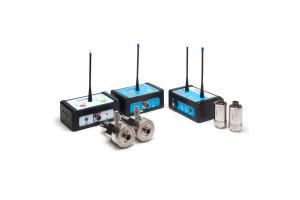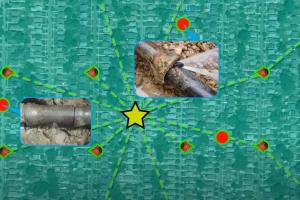Pub Singapore Harnesses Smart Technology to Fuel its Asset Renewal Programme
PUB, Singapore’s National Water Agency, manages a potable water network of 5,500 km (3,400 miles) of mains that deliver water to 1.5 million customer accounts. Regular asset renewal and maintenance is one of PUB’s key focus areas to strengthen network resilience by anticipating and responding to leaks and damage with minimal disruption to their operations. PUB has been implementing an ongoing pipeline replacement program since the 1980s, with an objective to reduce the leakage rate and maintain a level of fewer than six leaks every 100km per year.
Situation
In recent years, PUB has adopted a pre-emptive leak management approach to proactively replace older or leak-prone pipes under the Pipe Renewal Programme. For this project, PUB used pipe condition assessment technology and data analytics to determine the health status of the pipes to prioritize pipe replacement efforts for cast iron (CI) mains, which are generally more prone to leak failure.
PUB identified 450km of CI mains across Singapore that were between 100 and 400mm in diameter, for leak failure risk analysis. The objective was to determine the risk of failure of these selected mains, formulate a replacement plan based on geographic scope and risk level for pipeline prioritization, and eventually replace all CI mains.
Following an open bid, PUB appointed Echologics® to develop a prioritization plan through a combination of desktop study and field data capture on 80km of the CI network using its proprietary non-intrusive and non-destructive pipe condition assessment tool, ePulse®. To assist with the desktop model, Echologics engaged Suez, whose Netscan analytics software has been proven to work well with ePulse® through prior collaborations in France.
Action
A multi-staged approach, combining condition-driven asset management (CDAM) and asset management desktop models (AMDM) was put into effect for this project.
Echologics and SUEZ engineers began the process by collecting physical, operational, and environmental data. A series of statistical methodologies were applied to determine the likelihood of failure (LoF) and identify pipe clusters for pipe condition assessment. The selection and assessment of 80km of mains were divided into three phases to increase the likelihood of surveyed pipes that best represent each cluster and the network as a whole. At this juncture, ePulse® was deployed.
ePulse® combines acoustic data measured in the field with information about a pipe’s construction to determine its current structural wall thickness. The technology calculates the percentage of wall thickness loss by drawing a comparison of the measured thickness to the design thickness of the pipe.
While some assessment approaches rely on excavating and examining a small section of pipe, ePulse® takes a different approach, employing acoustics to establish the actual condition of an entire pipe segment. Completely non-invasive and using existing valves or fire hydrants as contact points, assessments are completed above ground with no impact on the network.
As an added benefit, ePulse® is also able to detect and pinpoint existing leaks while conducting field measurements. The position of the leak is then determined based on the time delay of the noise reaching each sensor and the distance between sensor points. This unparalleled benefit allows the assessment cost to be offset by the savings inherent in leakage reduction.
With the help of Netscan, the ePulse® data was extrapolated to the remainder of the CI mains, which in turn generated a specific value for each pipe segment to interpret the likelihood of failure, and subsequently, the risk of failure.
Netscan is an innovative asset management tool, based on a collaborative web platform that maximizes the benefits of pipe investment plans. It uses advanced modeling and predictive analysis to prioritize pipe renewal.
In order to determine the LoF, SUEZ employed a linear extension of the Yule model. The parametric nature of this model used eight years of historic burst data for rounds of calibration and validation, which was combined with various other parameters, before arriving at a LoF forecast.
Concurrently, a consequence of failure (CoF) model was developed with PUB’s water supply network team, to identify CoF criteria and its associated weighting. Thereafter, an individual CoF score for each pipe segment was computed and attributed to the model.
Finally, the consequence of failure was converted to a likelihood of failure threshold, used to determine the risk of failure.
Results
Of the 80km of CI pipeline tested using ePulse®, the field crew identified approximately half that had lost more than 30% of its original wall thickness. This data was then extrapolated to the entire 450km data set, and a likelihood of failure analysis was performed. By integrating the result gathered with the consequence of failure, the crew was able to determine which pipe segments had exceeded its risk threshold and therefore needed to be replaced.
PUB was able to use the results to develop a comprehensive pipe replacement program over the next five years. A significant percentage of the original CI network planned for replacement was able to be deferred as the pipes were still in good condition.
Conclusion
A failure risk analysis that combines CDAM and AMDM, proves to be an extremely effective tool when it comes to determining asset renewal and replacement needs. The seamless integration of technologies - ePulse® and Netscan, has empowered PUB to make informed decisions on its underground pipe network, enabling the continued provision of a reliable and sustainable water supply to its customers now and into the future.





